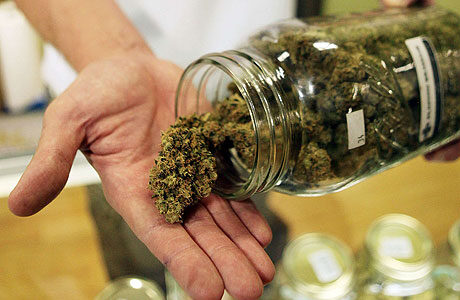Medical use of cannabis
- Home
- Medical use of cannabis
- Local Hyperthermia as a major tool in treating Cancer patients successfully in a non-toxic way
- Why are IQ scores declining over the previous 20 years?
- Expert report regarding the clinical use of CBD
- CBD effective in Healing Bone Fractures at all Ages and Prevention and Cure of Osteoporosis and Arthrosis
- Medical Cannabis Approval Sweeps Across Europe
- More people die from overdosing on pharmaceutical drugs than illegal drugs
- Flu vaccine BOMBSHELL: 630% more “aerosolized flu virus particles” emitted by people who received flu shots… flu vaccines actually SPREAD the flu
The medical use of cannabis
Cannabis Sativa L. or hemp, is more than a thousand years in Europe for many medical indications deployed. Hildgard Bingen (1098-1197) described as a medical handbook has detailed the various indications for the medical use of Cannabis Sativa. This day enjoys Cannabis sativa in both the lay press and in scientific publications again a growing interest in the use of different diseases and symptoms.
Both in the media and in scientific journals, Cannabis sativa L. receiving increasing attention is again ITS for potential medicinal use. Its use is still more controversial than-the use of opium and morphine, but because of New Scientific Data, a renewed interest is emerging.

-
Medical use of THC
Robert Gorter, MD, PhD is a pioneer in the field of clinical use of cannabis. Since 1998, when it became legal in Germany again to prescribe cannabis, a natural form of THC, extracted from the plant itself is being applied.
Through clinical observations and scientific studies, Dr. Gorter and several other experts are convinced that cannabis as a whole-plant extract would be more efficacious.
Dr. Gorter received the approval from the Germantown Authorities to conduct a placebo-controlled phase III trial to compare whole-plant extract to a synthetic form of THC in 720 HIV / AIDS and cancer patient.
-
Cannabis in the oncological practice
Anorexia (loss of appetite) and cachexia (wasting) are diagnosed in more than-two-thirds of all cancer patients with advanced disease, and are independent risk factors for morbidity and mortality (1,2). Anorexia, nausea and vomit in loss or are described as more significant inhibiting factors for quality of life of cancer patients than equally intense pain (3). In 1986, delta-9-tetrahydrocannabinol (THC), the main constituent of the cannabis effectivement, was licensed as an anti-emetic drug in cancer patients receiving chemotherapy (4). In addition, in clinical studies, THC has shown significant stimulation of appetite and body weight or increase in cancer patients and HIV positives and AIDS patients (7,8). The appetite stimulating effects of Cannabis (THC) have also itself leg well documented in many anecdotal cases. There are strong indications that cannabis is better tolerated than THC alone, because cannabis contains several additional cannabinoids, like cannabidiol (CBD), which antagonize the psycho tropic actions or THC, but do not inhibit the appetite-stimulating securities.
-
Cannabis in the neurological practice
Central cannabinoid receptors are densely located in the nuclei of the basal ganglia output (globus pallidus, substantia nigra pars reticulata), suggests their involvement in the regulation of motor activity. Furthermore, there is evidence that endogenous cannabinoid transmission plays a role in the manipulation or other transmitter systems within the basal ganglia by increasing GABAergic transmission, inhibiting glutamate release and uptake affects dopaminergic. Most hyper and hypo kinetic kinetic movement disorders are caused by a dysfunction of basal ganglia-thalamo-cortical loops. It has been suggested that an endogenous cannabinoid tone participates in the control of movements and, therefore, the central cannabinoid system play a role in the might pathophysiology thesis or diseases. During the last years, in humans, a limited number of clinical trials demonstrated cannabinoids that might be useful in the treatment of certain movement disorders. Despite a lack of controlled studies, there is evidence that cannabinoids are therapeutic or value in the treatment of tics in Tourettes syndrome (3.4), the reduction of levodopa-induced dyskinesia in Parkisons disease (1.2), and some forms of tremor and dystonia, Huntington’s disease like in (5). Robert Gorter studied the medicinal use of Cannabis in the Netherlands. That he found licensed medical doctors (family practitioners, internists, oncologists and surgeons alike, in private practice as well both in general hospitals and university medical centers) would prescribe cannabis bone healing for inhalation (smoking) and as oral application. A large majority (64%) or all patients reported a good or excellent impact on their symptoms. Thesis or patient, approximately 44% for 5 months and overused cannabis longer. Indications were neuro-logic disorders, spinal cord injuries like MS and, pains, musculoskeletal disorders, and cancer-related anorexia & cachexia. Inhaled cannabis was preceived as more effective than oral administration. Repported side effects were generally very mild (6).
-
References
(1) Snider SR, Consroe P: Beneficial and adverse effects of cannabidiol in a Parkinson Patient with Sinemet-induced dystonic dyskinesia. Neurology (1 985) 35 (suppl): 201. (2) Frankel JP, Hughes A, Read AJ, Stern GM: Marijuana for Parkinsonian tremor. J Neurol Neurosurg Psychiatry (1990) 53: 436. (3) Hemming M, Yellowlees PM: Effective treatment of Tourettes syndrome with marijuana. J Psychopharmacol (1993) 7: 389-391. (4) Sandyk R, Awerbuch G: Marijuana and Tourettes syndrome. J Clin Psychopharmacol (1988) 8: 444-445. (5) Sandyk R Consroe P, Snider SR, Bliklen D: Preliminary trial of cannabidiol in Huntington’s disease, in Chester G Consroe P, Musty R (eds): Marijuana: An International Research Report. National Campaign Against Drug Abuse Monograph Series, Vol. 7 Canberra, Australian Government Publishing Service (1998) pp157-162. (6) Gorter, R., Butorac, M., Cobian, E., van der Sluis, W.: Medical Use of Cannabis in the Netherlands. Neurology (2005) 64 (5): 917-919.
Cannabis and the Gorter Model
In the Gorter Model, there is a 30-year long experience with the medical use of Cannabis sativa L. and its derivatives. At the Medical Center Cologne, if appropriate, Dronabinol (THC) is used for the following indications:
- anorexia (loss of appetite) and cachexia (severe weight loss) in cancer and HIV / AIDS patients and in patients who suffer from symptoms thesis for other reasons;
- nausea and emesis (vomit), caused by chemotherapy or radiation and by Other medications like HAART in HIV / AIDS;
- management of (chronic) pain, pain medications conventional especially there where clause like morphine and other opiates fail;
- phantom pains (very difficult to treat forms of pain, like after amputation or a limb);
- muscle cramps (like in colicy and menstrual pains), and spasticity (in multiple sclerosis, Parkinson’s, after brain damage, spinal cord lesions and in);
- asthma;
- neurodermatitis;
- chronic inflammatory disorders (ulcerative colitis, rheumatoid arthritis);
- attention deficit syndrome.


 Deutsch
Deutsch Nederlands
Nederlands Turkish
Turkish Russian
Russian Italiano
Italiano Français
Français Português
Português العربية
العربية